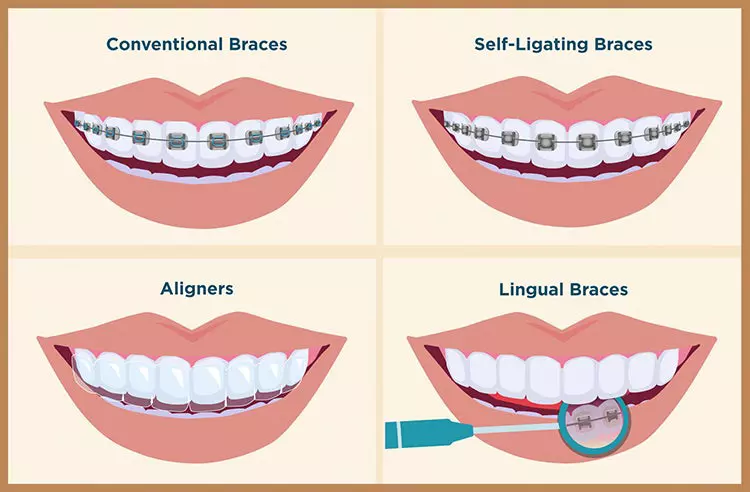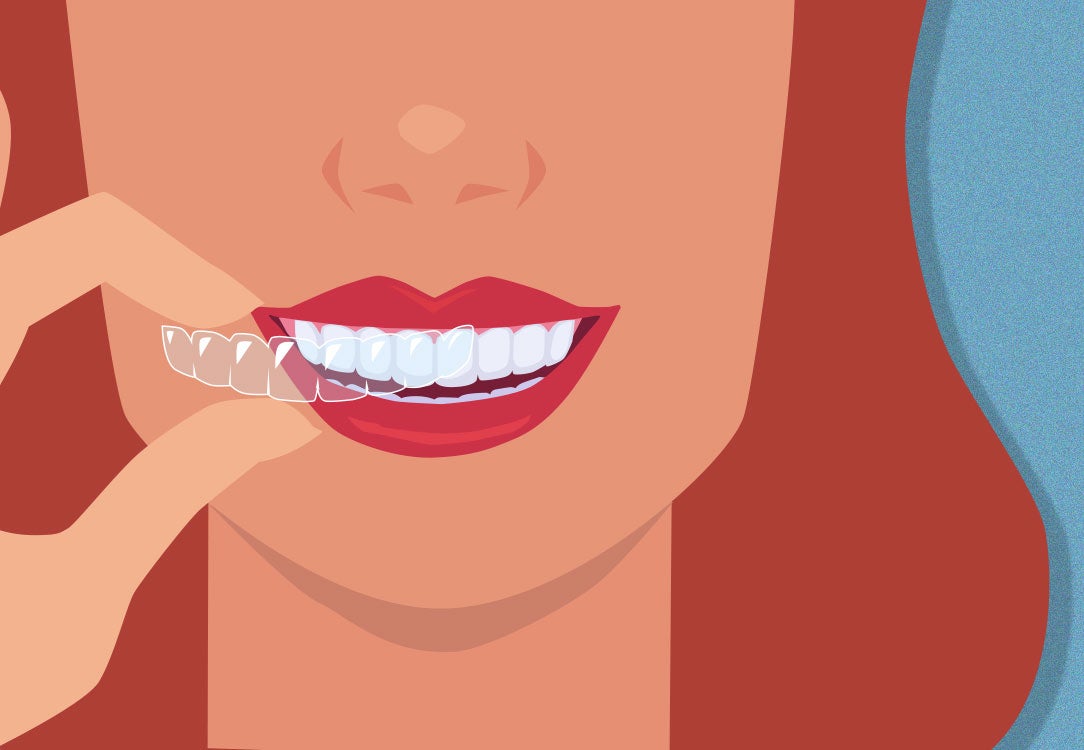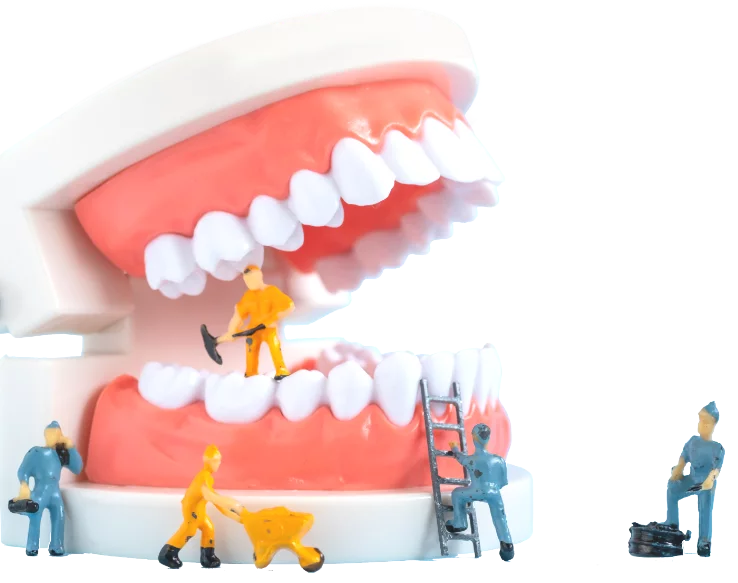Quote:
"This paragraph has a #ffee84 yellow background."
Dr. Rodgers
Can Adults Get Braces?
Yes, adults can get braces, regardless of age. Deciding to get braces is a personal consideration. However, age should not be a factor that keeps you from doing it in your decision-making process. Patients both young and old find that orthodontic treatment from Smile Generation Trusted Dentists gave them a lot of benefits in addition to the smile they always wanted.
Why Do Adults Get Braces?
However, looking better by having a straighter smile is only one benefit of modern orthodontic treatment. There are many other essential benefits to your oral health that you should consider. Adult braces can fix:
Crowded Teeth
Gaps Between Teeth
Overbites
Underbites
Misaligned Teeth
Jaw Alignment Issues
Bite Problems (General)
Another benefit of adult braces is that they can correct issues with your bite, also known as your occlusion. Improving occlusion can help prevent long-term oral health complications. Misaligned teeth are also harder to clean, making tooth decay more likely. When decay progresses, it can lead to gum disease, which—if left untreated—can result in tooth and bone loss. Even worse, gum disease has been linked to systemic health conditions, including stroke, heart disease, diabetes, and adverse pregnancy outcomes
What Are The Types of Adult Braces?
We called this article "Adult Braces," but that headline is a bit of a misnomer. One of the great things about adult orthodontics is the many orthodontic options available for your treatment. The word "braces" likely makes you think of a mouth full of metal, like the old days when braces were a twisted mess of brackets and wires. Today, many people can achieve their orthodontic goals without ever touching a metal bracket or wire. Even patients who opt for braces will find that the technology has come a long way since their friends had braces back in school.
Conventional Braces
Aligners
You may have seen commercials or social media campaigns for clear aligners. These removable appliances are clear plastic trays that you wear in your mouth when you are not eating or drinking. The aligners are designed by software to move your teeth in a progressive series of trays that you switch out every couple of weeks. One of the best things about clear aligners is that you can see your natural tooth through the tray and many people are not even aware you are wearing them.
If you would like to learn more about clear aligners, come read about the differences between clear aligners and conventional braces!
Self-Ligating Braces
Lingual Braces

Does Insurance Cover Adults Braces?
Key Things to Know:
Adult braces coverage is limited and not included in most dental plans.
Employer plans are fixed, while individual plans offer more choice.
Coverage caps and waiting periods apply to both types of plans.
Dental insurance with an orthodontic benefit can help reduce the cost of adult orthodontics. However, orthodontic benefits are not part of every policy, and usually, when they are part of the policy, they are for teens. In other words, finding insurance coverage for adult braces might take some research.
Unlike employer plans, you can choose the benefits on individual plans that you buy yourself. For example, Colgate.com names a plan from Delta Dental, DeltaCare USA PAA48, one of the largest nationwide dental insurance suppliers, that can reduce the cost of adult braces. However, it is essential to note that individual plan benefits and premiums vary by state and other factors, like age and gender, so be prepared to do some comparison shopping before committing. Also, like employer-sponsored dental insurance policies, there are coverage limits and waiting periods involved.[i]
Do Braces Hurt More As An Adult?
The short answer to this question is no; braces are not more uncomfortable as an adult. However, braces are uncomfortable when you first get them or when you have an adjustment.

How Long Do Adults Wear Braces?
Key Things to Know:
Treatment time varies based on your case and appliance type.
Most adults wear braces for 12 to 36 months, averaging about 25 months.
Clear aligner speed depends on how well you follow instructions.
Unfortunately, it isn't possible to straighten your teeth overnight. But, in many cases, it also doesn't mean wearing braces for years and years to get results. Under the care of your orthodontist, adult braces (and clear aligners) will move your teeth into place over time, depending upon your case and treatment plan.
So, you may be asking, how long do adults wear braces? The answer depends on what treatment you need to get the results you want. Estimates suggest that mild orthodontic cases take as little as 12 months while others take three years.[9] Per one study, researchers determined that the average length of time for treatment for patients in a fixed appliance (which means braces) is 24.9 months.[10] And, yes, in some cases, orthodontic treatment can take longer than three years.
Can You Get Braces with Gum Disease or Bone Loss?
Adult vs. Teen Braces: What Changes with Age?
The ADA estimates that many orthodontic patients are from 8 to 14 years old.[14] Orthodontists recommend taking children for a consultation by seven years old to determine whether orthodontic intervention is necessary early. That's because young people's bones are still growing, making it easier to get teeth into the proper position and adjust bites with orthodontic appliances rather than surgery.
Absent surgery, however, research indicates no difference in timelines for teens versus adults in treatment. It turns out that things that go faster in teens take longer in adults in one part of treatment and then switch to the opposite advantage in other parts of treatment. That means the aggregate time is about the same between the two groups. As the European Journal of Orthodontics puts it, "age does not seem to be playing a role [in treatment duration] provided the patients are in the permanent dentition." [16]
Find an Orthodontist Near You
Still, have questions about adult braces or need more information about the pros and cons of getting braces as an adult? Use our Find a Dentist tool to find a Smile Generation orthodontist near you to schedule your free consultation. Not only can you get your questions answered about braces options for adults or problems with braces in adults, but your orthodontist will also be able to tell you what they anticipate is necessary for your particular case.
Find your trusted, local dentist today!
Sources
[1] American Association of Orthodontists (2017, October 1). 7 myths about orthodontic treatment. Retrieved March 16, 2022, from https://aaoinfo.org/whats-trending/7-myths-about-orthodontic-treatment/ (Reviewed May 22, 2025)
[2] Orthodontics Australia. Braces myths debunked. Retrieved March 16, 2020, from https://orthodonticsaustralia.org.au/braces-myths-debunked/ (Reviewed May 22, 2025)
[3] Seladi-Schulman, J. (2021, March 1). What are self-ligating braces? Healthline. Retrieved March 15, 2022, from https://www.healthline.com/health/dental-and-oral-health/self-ligating-braces (Reviewed May 22, 2025)
[4] Wiley, C. What are lingual braces? Colgate. Retrieved March 17, 2022, from https://www.colgate.com/en-us/oral-health/adult-orthodontics/what-are-lingual-braces/ (Reviewed May 22, 2025)
[5] Hunt, J. (2019, June 25). Average cost of braces from the ADA. The Balance. Retrieved September 24, 2019, from https://www.thebalancemoney.com/ (Reviewed May 22, 2025)
[6] Are you too old for braces? Harvard Health Publishing. Retrieved September 24, 2019, from https://www.health.harvard.edu/healthbeat/are-you-too-old-for-braces (Reviewed May 22, 2025)
[7] Connor, E. (2017, May 2). Braces in adults. Healthline. Retrieved March 15, 2022, from https://www.healthline.com/health/dental-health/adult-braces (Reviewed May 22, 2025)
[8] How to find dental insurance that covers braces for adults. Colgate. Retrieved March 15, 2022, from https://www.colgate.com/en-us/oral-health/adult-oral-care/how-to-find-dental-insurance-that-covers-braces-for-adults (Reviewed May 22, 2025)
[9] Silver, N. (2021, January 11). How long do braces take? Healthline. Retrieved March 15, 2022, from https://www.healthline.com/health/how-long-do-braces-take#average-duration (Reviewed May 22, 2025)
[10] Abbing, A., Koretsi, V., Eliades, T., et al. (2020). Duration of orthodontic treatment with fixed appliances in adolescents and adults: A systematic review with meta-analysis. Progress in Orthodontics, 21, 37. https://doi.org/10.1186/s40510-020-00334-4 (Reviewed May 22, 2025)
[11] Connor, E. (2017, May 2). Braces in adults. Healthline. Retrieved March 15, 2022, from https://www.healthline.com/health/dental-health/adult-braces (Reviewed May 22, 2025)
[12] Ellis, R. R. (2015, December 15). Straight talk about braces for adults. WebMD. Retrieved March 15, 2022, from https://www.webmd.com/oral-health/features/straight-talk-about-braces-for-adults#1 (Reviewed May 22, 2025)
[13] Connor, E. (2017, May 2). Braces in adults. Healthline. Retrieved March 15, 2022, from https://www.healthline.com/health/dental-health/adult-braces (Reviewed May 22, 2025)
[14] Braces. MouthHealthy. Retrieved September 24, 2019, from https://www.mouthhealthy.org/all-topics-a-z/braces/ (Reviewed May 22, 2025)
[15] Abbing, A., Koretsi, V., Eliades, T. et al. Duration of orthodontic treatment with fixed appliances in adolescents and adults: a systematic review with meta-analysis. Prog Orthod. 21, 37 (2020). https://doi.org/10.1186/s40510-020-00334-4
[16] Mavreas, D., & Athanasiou, A. E. (2008). Factors affecting the duration of orthodontic treatment: A systematic review. European Journal of Orthodontics, 30(4), 386–395. https://doi.org/10.1093/ejo/cjn018 (Reviewed May 22, 2025)
Smile Generation blog articles are reviewed by a licensed dental professional before publishing. However, we present this information for educational purposes only with the intent to promote readers’ understanding of oral health and oral healthcare treatment options and technology. We do not intend for our blog content to substitute for professional dental care and clinical advice, diagnosis, or treatment planning provided by a licensed dental professional. Smile Generation always recommends seeking the advice of a dentist, physician, or other licensed healthcare professional for a dental or medical condition or treatment.









